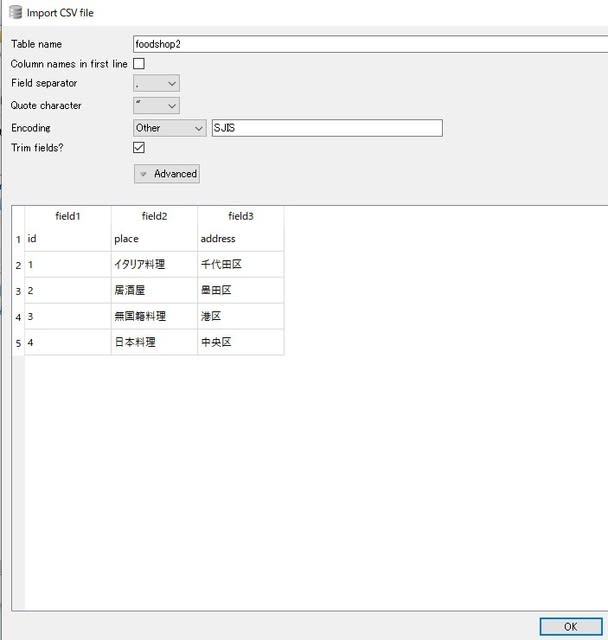

Failing row had 9 columns but 11 values were supplied." and it goes on to list the 11 values showing the last 2 values as "null,null". The error message is "Error importing data from record number 1. But it fails when the CSV file has around 10000 records, yet the failure is on "record 1" which is the same regardless of how many records are in the CSV file. It DOES work fine when the CSV file has around 1000 records, including column names in the first record. By the Way…ĭB Browser for SQLite is the training tool that ClydeBank Media recommends for SQL beginners.Įxplore the tool with a provided training database, examples, and guided exercises in our new SQL QuickStart Guide by SQL expert and database entrepreneur Walter Shields.Įven without Walter’s comprehensive guide, DB Browser for SQLite is still a powerful and-most important-accessible tool for SQL beginners who are learning the ropes.Cannot import a CSV file intl SQLITE using DB Browser for SQLITE.

You can learn more about the software, its functionality, and documentation by visiting the DB Browser site here.
#Db browser for sqlite import from excel software#
The goal is for the software to remain simple, visual, and accessible by both developers and end users. This tool is not meant to be a new shell for the sqlite command line tool, and it isn’t an adequate tool for advanced SQL command users. Plotting FunctionĭB Browser has a basic plotting functionality that can be used to plot simple graphs based on the data gathered from a table or a specific query. This feature makes DB Browser for SQLite an excellent tool for new users, SQL beginners, or anyone attempting to learn the SQL programming language. Additionally, all SQL commands are logged in the application. SQL QueriesĭB Browser allows users to issue SQL queries and inspect the results. These files usually exists as a list of SQL statements and are most often used as a method of backing up databases to prevent data loss. SQL dump files-also known as database dumps-are files that contain a record of the table structure or the data in a database. Import and ExportĭB Browser for SQLite has a suite of import and export tools that allow users to import and export the following: Records, tables, and indexes are the building blocks of managing information in a database. Just like the index in the back of a book, each index entry acts as a pointer to data elsewhere in the database. Indexes are specific lookup tables that are used to speed up data retrieval within a database. Each database file will contain numerous tables, each filled with numerous records. Records are objects that contain one or more values. Tables, Indexes, and RecordsĭB Browser offers functionality to search, create, define, and delete tables, indexes, and records. Database files can grow quickly as they are used-compacting doesn’t compress information, but it does eliminate unused space to make the file smaller (and more manageable). The most common database files that DB Browser users will come across are those with the file extension “.db”.Ĭompacting database files is a way to manage file growth. Database FilesĭB Browser allows users to create and compact database files. The software provides controls and wizards to handle an array of database functions in a comfortable visual medium. You can access the tool here, or continue reading to learn more about the software’s functionality. The current iteration is a successor to what was formerly known as SQLite Database Browser.ĭB Browser is a free, open-source tool for end users and developers who want to use a familiar spreadsheet-like interface to manage database files without having to learn complicated SQL commands. DB Browser for SQLite is a visual tool used to create, design, and edit database files compatible with SQLite.


 0 kommentar(er)
0 kommentar(er)
